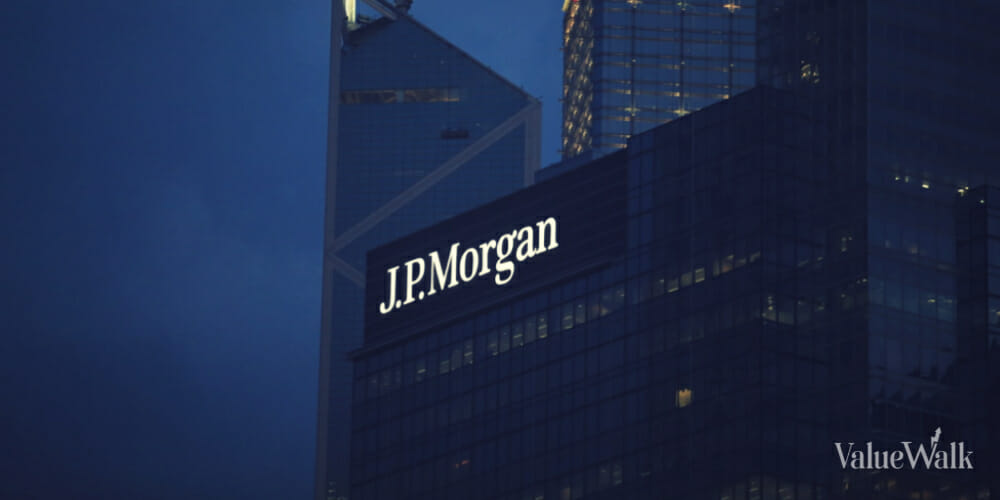The Long and Short of It: Why JPMorgan Chase Has Dominated its Market

Pretty much any way you slice it, JPMorgan Chase (NYSE:JPM), the nation’s largest bank, has dominated its industry. It has been one of the best bank stocks year to date and over the past year, and it has also been the best over the longer term.
Over the past one-year period as of Dec. 8, JPMorgan Chase is up 10.1%, and year to date, it has returned 19.6%. Among the top 10 banks, only Capital One Financial (NYSE:COF) has better numbers — up 26.3% and 30.2%, respectively.
In the past five years, JPMorgan Chase has an average annual return of 9.4%, and only Goldman Sachs (NYSE:GS) is better at 14.5%. Over the past 10 years, JPMorgan has posted an average annualized return of 10.8%, the best of the bunch, and the same goes for the 20-year sample, with an annualized return of 7.9%.
JPMorgan Chase has long been the gold standard for banks and large financial services institutions, and the reason why boils down to three overriding factors.
Fortress balance sheet
Perhaps the major reason that JPMorgan Chase has dominated its market is its organizational stability, which comes from having the same CEO, Jamie Dimon, in place since 2005. None of its large bank competitors have had that type of executive stability. Bank of America, helmed by Brian Moynihan since 2010, would be the next closest.
Of course, having that kind of stability at the top only comes from having a clear strategy and executing on it, which Dimon and his team have done. At the heart of his strategy is the concept of the fortress balance sheet. Dimon popularized the term in the 2000s, and it has become synonymous with his company over the years, central to just about everything the firm does.
The concept of a fortress balance sheet simply involves managing finances so that the firm always has plenty of liquidity and relatively little debt so that it can handle even the worst market shocks. This was the philosophy and strategy at JPMorgan Chase before the Global Financial Crisis in 2007-2009 and before Dodd-Frank mandated capital ratios. In fact, this strategy allowed JPMorgan Chase to navigate the crisis better than its competitors.
Even beyond that, it has helped the company to grow. Through its efficient management, JPMorgan Chase has had the capital to invest and acquire, particularly at times when others didn’t. For example, its capital strength allowed it to buy Bear Stearns and Washington Mutual in 2008 during the financial crisis. Just this year, during the banking crisis, JPMorgan Chase purchased the assets of the failed First Republic Bank.
The key metric for JPMorgan Chase over the years is its efficiency, or overhead, ratio. This metric shows how much the bank spends to generate $1 of revenue. JPMorgan’s overhead ratio, which is currently 55%, has consistently been lower than those of its competitors over the years. This ability to operate efficiently has enabled JPMorgan Chase to build a more balanced operation than its competitors with multiple revenue streams that allow it to navigate the economic and market ups and downs better than most — if not all.
JPMorgan Chase is a leader in consumer banking and investment banking, but it also has a robust asset and wealth management arm and commercial banking. This year, while investment banking is down, the other three segments are up.
Advantages make JPMorgan Chase a buy
The banking industry is fairly cyclical, performing well when the economy does. However, JPMorgan’s above-mentioned advantages have made it less cyclical than its competitors, meaning it outperforms in down markets and still produces market-beating returns during good markets.
The other positive that comes from the bank’s fortress balance sheet and efficiency is its dividend. JPMorgan Chase has increased its annual dividend payout for the past 13 straight years, even in 2020 during the pandemic crash, when many banks had to suspend or cut their dividends. It currently pays out a dividend of $1.05 per share at a 2.65% yield.
Finally, JPMorgan Chase is trading at just nine times earnings, so it is a good value and an excellent long-term buy.

Comments are closed.